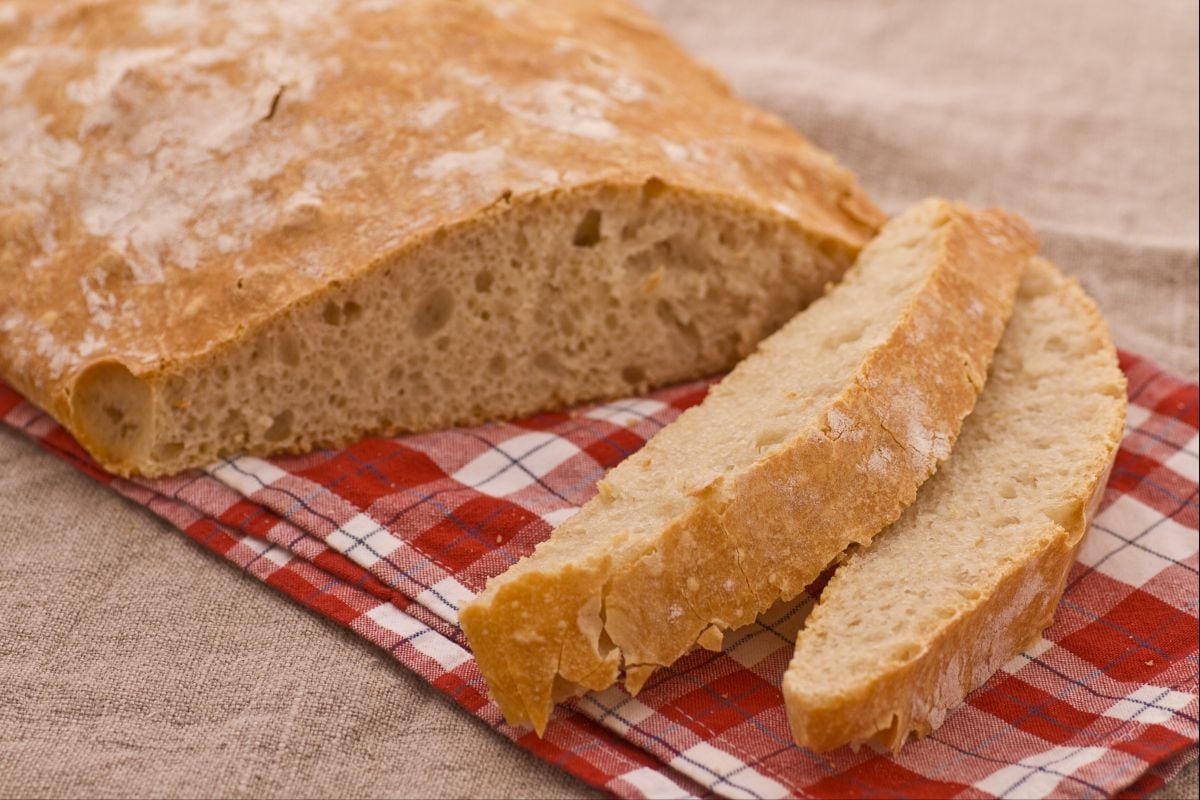No-Knead Pizza
- Easy
- 60 min
- Kcal 643

Soft, chewy texture and that classic crisp outside make no-knead ciabatta bread a regular hit for anyone who loves good homemade bread. Each loaf shows off those big, irregular air pockets and the golden color families expect from easy ciabatta bread. Visually, you get that rustic, bakery look—nice for family tables or relaxed get-togethers. The way this Italian bread looks and tastes just works for so many family meals…great for a dinner side, works with breakfast spreads, or even as stand-alone slices with a bit of butter. Classic bread fans enjoy this since it captures all the key features—soft inside, chewy bite, crisp crust—plus a really good homemade flavor that keeps people coming back for more. Simple flour-dusted tops set off that fresh-from-the-bakery appeal without fussing over technique. Family celebrations or just Tuesday night dinners both get an upgrade with this bread sitting right in the middle.
Busy schedules make no-knead ciabatta especially popular, since it’s low-maintenance but delivers top-notch texture. Many home cooks use this easy ciabatta bread for quick sandwiches, and it’s nice with soups or salads too—DEXLICIOUS when dunked in a little olive oil. Versatile shape means you can slice long pieces for bruschetta or tear off rustic hunks for cozy sharing. Kids love its soft, chewy middle; grown-ups appreciate how it layers with cheeses, roasted veggies, or classic sub fillings. Since homemade Italian bread easy is always a crowd-pleaser, this loaf just slots into any meal plan—serve with charcuterie, roll up for picnics, or bring to potlucks. Honestly, you can rely on this style of family favorite every week—the flavor, the chew, the look…it stays great for days and folks definitely ask for it again. Whether you want something nice for a weekend lunch or need a go-to option for busy weeknights, this easy ciabatta bread is one families just LIKE having around—no fancy tricks, just reliable comfort every time.

Here’s how to proceed to prepare the no-knead ciabatta. Pour the flour into a large bowl, then add the dry yeast 1. Dissolve the salt and malt in warm water 2, mix well, and then pour the mixture into the bowl 3 with flour and yeast.

Mix just enough to combine the ingredients 4, then cover the bowl with plastic wrap 5 and let it rise at room temperature (put the bowl inside the turned-off oven) for at least 18 hours. After the indicated time, the dough should have a bubbly and rather sticky consistency. Take a baking sheet, slightly oil it 6 with extra virgin olive oil.

and sprinkle it with cornmeal 7. On a work surface, spray some water 8 and place a piece of plastic wrap on top 9.

Sprinkle the plastic wrap with plenty of all-purpose flour 10. Pour the dough over the floured wrap 11 and, flouring your hands, give it a fairly flat and elongated shape. Move the wrap close to the baking sheet and with a decisive motion, flip the dough onto it 12.

Reshape it into a flat and elongated form, sprinkle flour on the surface 13, then cover the ciabatta with a clean cloth 14 and let it rise for another two hours at 86°F. After the two hours, bake it in a preheated oven for 40 minutes at 428°F. Once the no-knead ciabatta has a hazel crust, take it out of the oven 15.